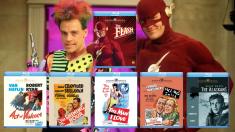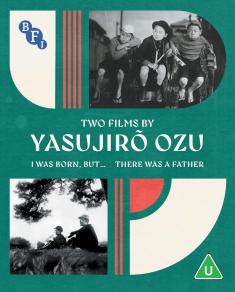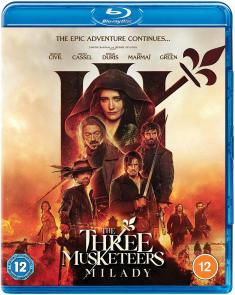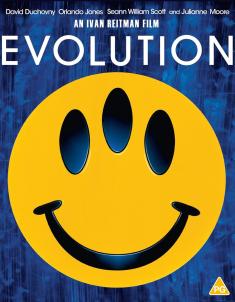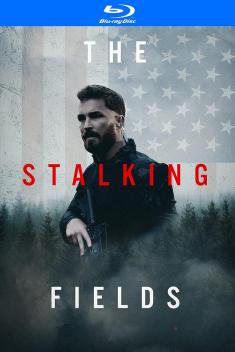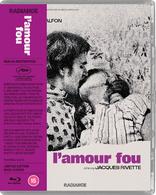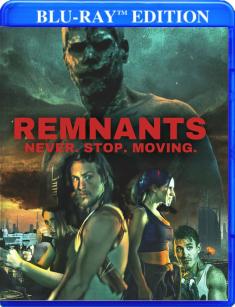The Big Parade (Digibook)
Overview -The idle son of a rich businessman joins the army when the U.S.A. enters World War One. He is sent to France, where he becomes friends with two working-class soldiers. He also falls in love with a Frenchwoman, but has to leave her to move to the frontline.
Storyline: Our Reviewer's Take

It's hard to believe that once upon a time, Metro-Goldwyn-Mayer, arguably the most prestigious dream factory during Hollywood's storied Golden Age, was once a fledgling studio vying for supremacy in a cluttered landscape and desperate for a big hit to put it on the cinematic map. Studio chief Louis B. Mayer and his "boy wonder" head of production Irving Thalberg audaciously mounted two epic, make-or-break productions in 1925 - the World War I saga, 'The Big Parade,' and the biblical behemoth, 'Ben-Hur.' Both amassed huge box office returns, but 'The Big Parade' became a phenomenon, running continuously in New York City for a whopping 96 weeks, and remaining MGM's greatest financial success for 14 years, until it was knocked off its pedestal by another large-scale war drama, 'Gone With the Wind.' A spectacle like few others in the silent era, 'The Big Parade' paved the way for a string of World War I yarns, helped define the Hollywood epic, and most importantly, introduced more realism into an industry built on fantasy. Though it doesn't hold up as well today as other war movies of its era, such as 'Wings' and 'All Quiet on the Western Front,' King Vidor's film still impresses, as it combines artistry, action, emotion, and message into a cohesive and satisfying whole.
No doubt about it, 'The Big Parade' is a big picture, but despite its wide canvas and cast of thousands, it manages to maintain an effective intimacy as it focuses on three men from divergent backgrounds who succumb to the patriotic fervor sweeping the nation after America declares war in the spring of 1917. Jim Apperson (John Gilbert) is a spoiled, idle rich boy who impulsively enlists in the Army to win his dour father's respect and make a dashing figure for his shallow girlfriend. He, along with construction worker Slim (Karl Dane) and bartender Bull (Tom O'Brien), can't wait to see action in France, but the trio of starry-eyed men with dreams of heroic grandeur have no idea what awaits them on the battlefield, and all the military training they receive still leaves them ill-equipped to handle the physical, mental, and emotional strain of trench warfare. Weeks of inactivity allow Jim to woo Melisande (Renée Adorée), a French country girl who quickly becomes smitten and can't bear the thought of her American soldier marching into harm's way. Their emotional parting, with Jim aboard an Army truck and a distraught Melisande at first clinging to him, then hysterically running after the convoy set the standard for future romantic wartime valedictions, and remains the film's iconic sequence. (David O. Selznick would borrow heavily from the scene for the equally memorable train station farewell between Robert Walker and Jennifer Jones in the World War II homefront drama, 'Since You Went Away.')
It's amazing to think 'The Big Parade' was produced a mere seven years after the end of World War I, when the wounds of the devastating conflict were still fresh, and many soldiers and civilians still struggled to piece together the shards of their fractured lives. Straightforward and no-nonsense, the film methodically chronicles the journey of enlisted men from basic training to the front lines, and its slice-of-life, nuts-and-bolts approach works both for and against it, providing necessary insight, but also bogging the narrative down. Passion is present, albeit in intermittent bursts, and most of the comedy is very dated. The movie also takes an admirable anti-war stand, but seems reluctant to take it far enough to achieve maximum impact. Maybe I'm asking too much of a motion picture that broke new ground in its frank depiction of war, especially when the passage of time has allowed its successors to expand on its ideas and views. Yet my admiration for 'The Big Parade' makes me wish it more fully realized this potent angle, even though, at the time, America probably couldn't have handled it.
With the exception of one signature scene, in which an endless army convoy travels bumper-to-bumper down a straight dirt road, 'The Big Parade' was shot in and around Los Angeles, and it shows. Vidor's ability, however, to grab our attention and keep us focused on the story make such anomalies as the palm tree in the background of a New York City shot or the eucalyptus trees lining what's supposed to be the French countryside easier to overlook. 'The Big Parade' may lumber along at times, dragging out mundane sequences and adding unnecessary bits of atmosphere, but its presentation remains consistently strong. Vidor's expert use of color tinting (a common practice of silent cinema) and his accomplished visual sense always keep the eye engaged even when the plot meanders.
And it does meander during its early stages. If you think it takes 'The Deer Hunter' a long time to get from Pennsylvania to Vietnam, then you haven't seen 'The Big Parade.' Almost 90 minutes transpire before the we see the first shot fired, and though the battle sequences are impressively mounted and filled with tension and despair, a certain amount of fatigue sets in before they start. Too many scenes of basic training, troop bonding, daily drudgery, and comic relief pad the running time, and while most were specifically designed to show the soldiers' naiveté, boredom, and unpreparedness - thus making their war experiences more horrific - they stall the movie's momentum. At one point, an exasperated character complains, "We've ridden far enough and walked far enough to be in China!" And it's hard for the audience not to agree. Like the soldiers, we're anxious for the games to begin, but Vidor overplays his hand, allowing his epic vision to negatively influence his storytelling.
Of course, 1925 viewers had never before witnessed such intense battle recreations on screen, so their impact could not be underestimated. Viewers of today, however, have pretty much seen it all, so most won't react as viscerally to the suffering depicted, despite the raw power emanating from the frame. Yet a few scenes still pack a punch, among them an injured Jim sharing a foxhole with a German soldier, and the one in which Jim and his comrades forge ahead through a forest and German snipers pick off isolated American troops one-by-one behind them. The latter scene has even more gravitas due to its silent nature; because there's no sound of gunfire, the wounded men just randomly fall, taking us by surprise, and the image is both striking and moving.
Despite my nitpicking, 'The Big Parade' never fails to impress me with its scope, artistry, and the quality of its performances. Vidor, who had never before directed a film on such a grand scale, completely rises to the challenge, and Gilbert, heretofore regarded as a lightweight pretty boy, flexes some considerable acting muscle as he takes Jim through several difficult stages. This film cemented both men's reputations, although Gilbert would soon become one of Hollywood's most notable tragedies when the advent of sound unjustly short-circuited his career. Rumor has it he possessed a squeaky voice that didn't translate well to the new medium, but there's no evidence to support this, and when roles dried up in the early 1930s, Gilbert descended into alcoholism and died of a heart attack in 1936 at age 38.
In 1925, there were no Oscars, but 'The Big Parade' won what's considered to be the forerunner to the Academy Award - the Photoplay Medal of Honor. The citation may be forgotten, but this stirring war epic remains one of the silent era's great achievements, a film that may be flawed by today's standards, but still inspires excitement, admiration, and even a bit of awe.
The Blu-ray: Vital Disc Stats
'The Big Parade' arrives on Blu-ray packaged in one of Warner's signature digibooks. Inside the hard-back volume lies the BD50 dual-layer disc, as well as a handsomely designed, lavishly illustrated, 64-page tribute to this milestone movie printed on glossy paper stock. Historian Kevin Brownlow provides a comprehensive text that includes sections on Vidor, Gilbert, actors Karl Dane and Renée Adorée (both of whom, along with Gilbert, died tragically young), as well as detailed, first-hand accounts of the film's production, its reception and impact, and the composition of Carl Davis' modern music score. There's also a full-color reproduction of the movie's original 16-page program. This is one of the most substantive and impeccably produced digibooks I've seen, and Warner deserves kudos for lavishing such attention (and expense) on this classic release.
Once the disc is inserted into the player, the static menu immediately pops up; no previews or promos precede it.
Video Review
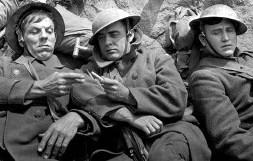
Eighty-eight-year-old films just aren't supposed to look this good, yet Warner Home Video has done it again, presenting a spectacular transfer of a classic antique. Meticulously restored in 2004, 'The Big Parade' was already in great shape, but this 1080p/AVC MPEG-4 rendering breathes even more life into this epic film. Grain, of course, is evident, and though it's more pronounced in some scenes than in others (these are undoubtedly scenes that, according to the liner notes, had decomposed and had to be replaced with corresponding material from a dupe negative), the texture it provides beautifully suits the period subject matter. Crystal clear title cards, however, sport deep blacks and bold whites, along with sharply defined letters, lending a modern sleekness to this 1925 movie. Amazingly, only a couple of errant nicks and marks dot the source material, allowing for full immersion in the tale, and I could detect only one missing frame, right around the 2-hour-8-minute mark.
Detail levels are extraordinary for such a vintage movie, with surprisingly crisp background elements adding a marvelous sense of depth to most shots. Superior gray scale variance helps in that regard as well, with both interior and exterior scenes exhibiting fine degrees of shading. Tinted sequences - blue for evening, amber for isolated interiors, and one striking rose-colored scene late in the film - add some pop to the visuals without overwhelming the story, and one splash of color - a hand-painted frame of the Red Cross symbol - is lusciously dense and makes a sober dramatic statement. Contrast is stellar across the board, although an occasional shot appears a little washed out, and close-ups highlight facial features well, especially the polished good looks of Gilbert.
Seeing 'The Big Parade' so beautifully preserved heightens the film's impact and makes it more relatable, and Warner should be congratulated for lavishing such care on this silent classic.
Audio Review
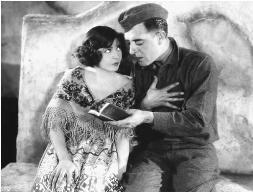
Silent film soundtracks, aside from a few isolated audio effects, are all about the music, and this DTS-HD Master Audio 5.1 mix superbly showcases Carl Davis' rousing symphonic score. Performed by the English Chamber Orchestra, the music deftly employs popular songs of the day, such as 'Over There,' 'You're in the Army Now,' and 'My Buddy,' in several clever variations, and the sound brims with warmth, tonal depth, and pleasing fidelity. A wide dynamic scale handles all the highs and lows with ease, so there's never a hint of distortion, and no hiss, pops, or crackles disrupt the track's purity.
Accents, like the piercing steam whistle and a few exploding shells, possess fine presence and healthy low-end tones, but the subwoofer - like the film itself - stays silent. Some nice stereo separation up front provides added aural interest, but surround activity is surprisingly faint. The music easily fills the room, but the track only mildly engages the rear channels.
Clear, vibrant, and beautifully modulated, this track adds contemporary flair to an antiquated movie, and will play well on almost any audio system.
Special Features

In addition to the stunning 64-page digibook, a few other noteworthy extras grace this impressive release.
- Audio Commentary – Historian Jeffrey Vance sits down for a well-spoken, informative, and insightful commentary that also features remarks from director King Vidor himself, courtesy of a recorded Director's Guild oral history conducted in the 1970s. Vance is an unabashed Vidor fan (he recalls meeting the director following a theatrical screening of 'The Big Parade' in the 1980s), yet his enthusiasm doesn't color his perspective on the man or his films. In a matter-of-fact manner, Vance talks about how 'The Big Parade' runs the gamut from "low humor to high drama" and from subtlety to cinematic bravura; how the film marked the first big hit for the fledgling MGM studio; and how the movie inspired a wave of World War I pictures. He also discusses the deliberate pacing and tells us scenes were added to lend 'The Big Parade' more of an epic feel when the production was designated a "road show" release. In addition, Vance encapsulates the lives of both Vidor and actor John Gilbert, notes the prevalence of improvisation on the set, explains why silent films require a greater degree of audience involvement than talkies, and cites the movie's glowing critical reviews. Vance provides a number of quotes from Gilbert, who termed 'The Big Parade' his favorite film ("It was the high point of my career," recalled the actor, who would die from the effects of alcoholism at age 38. "All that has followed is balderdash!"), while the Vidor excerpts cover the background of the film, various reshoots, how the famous gum-chewing scene evolved, and his experiences at several premiere showings. This is a thoughtful, thoroughly researched, well-presented, and absorbing track that enhances appreciation for 'The Big Parade' and puts its legacy in perspective.
- Vintage Featurette: "1925 Studio Tour" (SD, 32 minutes) – Take a walk into yesteryear and discover how a movie studio really worked during the golden age of silent pictures with an all-access tour of the 43-acre MGM lot, which at that time housed 14 stages (they weren't yet called soundstages) and employed thousands of people. From the gatekeepers, writers, directors, and stars to designers, technicians, publicity executives, and lowly laborers, this Filmmaking 101 course takes us step by step through the production process, with additional stops at the music department, dancing school, studio hospital, commissary, and barber shop. We see directors at work on the set, witness stars such as Norma Shearer, John Gilbert, and Zasu Pitts clowning around, and meet legendary art director Cedric Gibbons at the start of his career. Eagle eyes will even recognize a few clips from this short that were later recycled for use in the MGM musicals documentary 'That's Entertainment!' in 1974. But without question the featurette's most notable moment is the surprise glimpse of a young starlet named Lucille Le Sueur, who appears as a model in the costume department sequence and is heralded as an MGM "find." Though she hadn't yet received the full studio makeover, classic film buffs will instantly recognize Le Sueur as the actress who soon would be renamed Joan Crawford, and only a few years later would reign as one of the queens of the MGM lot. This short marks one of Crawford's earliest film appearances, raising both its interest level and historical significance.
- Theatrical Trailer (SD, 2 minutes) – This hyperbolic preview proclaims, among other things, "Nothing bigger has ever been shown on the stage or screen."
Final Thoughts
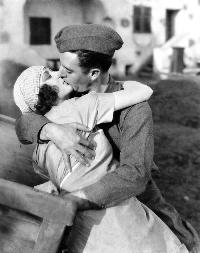
'The Big Parade' stands as a monumental achievement in the annals of silent cinema. King Vidor's epic chronicle of a trio of American soldiers who ride the wave of patriotism into the horrors of World War I remains an impressive piece of filmmaking in a primitive age. Though a bit bloated and draggy in places, the story's core emotions always come through, and the artistry and spectacle still dazzle some 88 years after the movie's premiere. Warner's classy Blu-ray presentation features top-notch video and audio transfers, thin but worthwhile supplements, and handsome digibook packaging that will certainly please classic film collectors. Not as thrilling as 'Wings' or as powerful as the early talkie 'All Quiet on the Western Front,' 'The Big Parade' nevertheless combines action, romance, comedy, and drama into a cohesive whole, and paints an accurate picture of a turbulent era of American history. It's not my favorite silent film, but its worth cannot be minimized, and so it earns a high and hearty recommendation.
